Depression was the first Grief (I have no idea if “Griefs” is going to stick as a name for them, I’m just not a fan of saying “stages” when in the context of the game they are beings) that I began thinking about and designing in depth.
Character Overview:
Depression is one of the four Griefs the player must confront in the game. Depression is slow and heavy, their tone is deathly and sombre. Depression is a being or creature that appears to be created out of pure darkness or shadow matter. The colour scheme should reflect their respective world area’s ambience – dark, ruins, empty and barren. There is an eerie looming presence taht follows it.
Initial Design Process
I looked at existing characters and creatures from all sorts of different media (TV, animation & games) that I found gave off the energy and general idea I was going for, although at this point I did not have an art style in mind, it doesn’t help that I don’t think of myself as an artist despite thinking I can draw (humble). I just wanted something on paper.
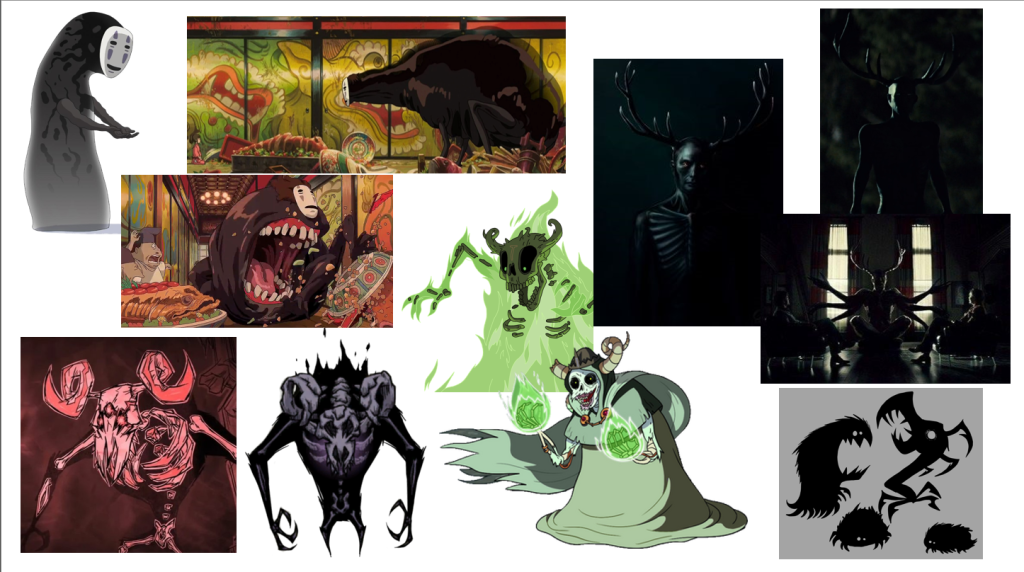
I thought about the character taking on two different forms to show that depression, both as a mental illness and emotion, do not always function, look or present in the same. I toyed around with the concept of representing a generalised form of depression and a more manic form of it. I researched deeper into their differences and found some distinct features that would apply, the main difference being that manic depression involves extreme mood swing and is very often associated with bipolar disorder.
| Generalised Depression | Symptoms include feeling sad, hopeless, or empty, and losing interest in activities. People with depression may have some good days, but without treatment, their mood tends to remain low. |
| Manic Depression | Symptoms include extreme mood swings between mania and depression. During a manic episode, people may feel very happy, full of energy, and have an exaggerated sense of self-esteem. During a depressive episode, people may feel very sad, hopeless, or anxious. |
First form
Depression’s first form would be the form the player would first encounter, and at this stage I want them to portray generalised depression. I want it to be appear meek, small and weak in comparison to its more unstable and hostile counterpart.
Key features:
- small body
- deep set eyes
- hunched over, kept to itself, insecure
- deprived, isolated, broken
Second form
Depression will then take on a second form when it is provoked/interacted with by the player. I want this transition to be an erratic eruption – as if the creature was breaking out of itself into a new aggressive form. By morphing into this new form (maybe releasing a battle cry ?), it’ll be made known to the player that a fight will begin.
Key features:
- large, slow but powerful body
- sharper, unbalanced, unstable, static-like
- threatening, lethal, hostile
- draining, all consuming presence
First concept sketches
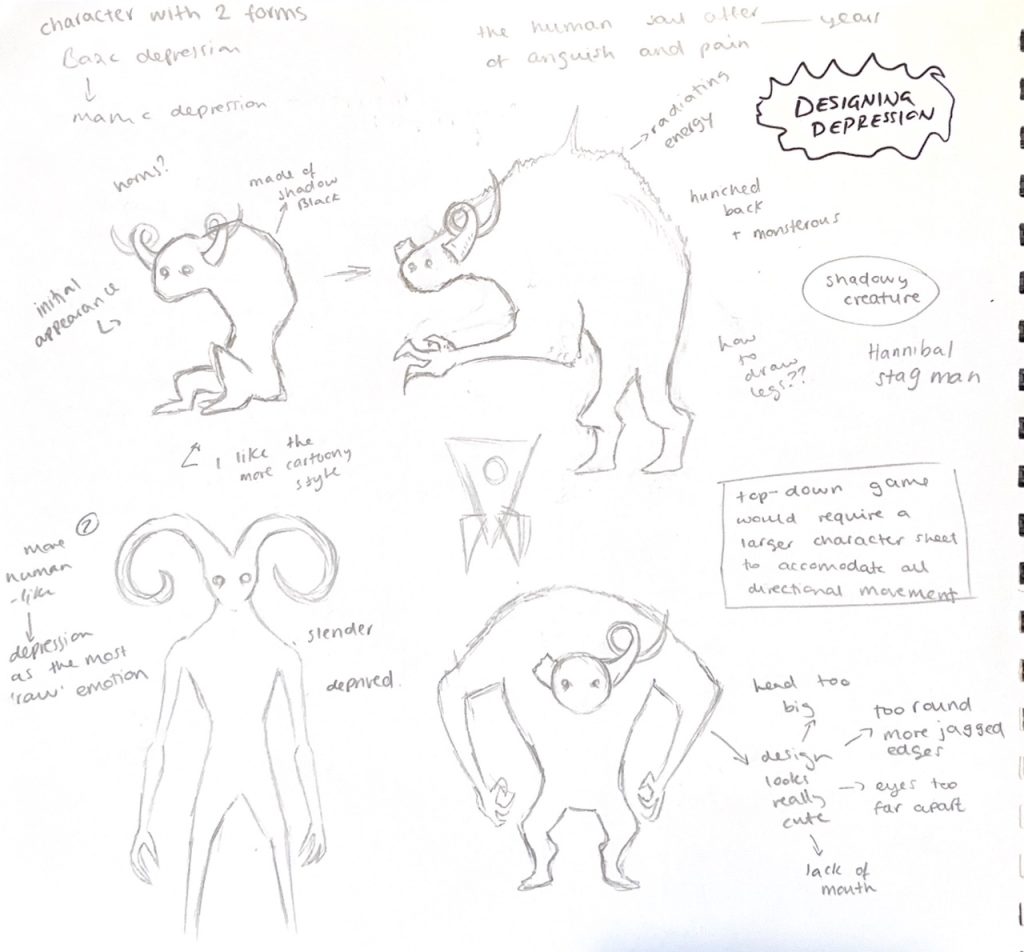


I had gone around showing these sketches to my closest peers and friends. All said that they liked the design, however the ‘skinnier’ design (2) was less cared for – the general consensus being that they felt that depression should be represented as a large, overwhelming and overbearing being.
I still felt like there was something missing so I tried re-creating the design using pixel art after being inspired by this animation I found on Pinterest.
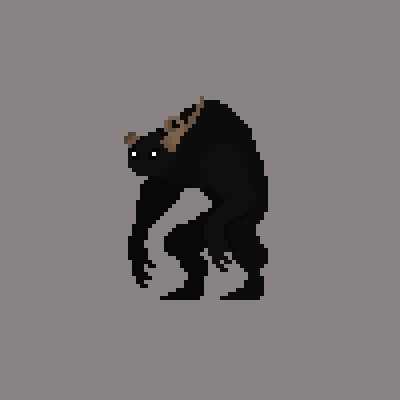
This design and style received very positive feedback. I had time and quickly created an idle animation. I do feel like it added a little more character/life to it.
I had discussions about experiences in therapy. One person spoke to me about how their therapist would distinguish the physical differences between anxiety and depression. Mainly, how depression is felt predominantly in the stomach area whereas anxiety is felt more in the chest. This got me thinking how can my Depression creature can reflect this… hole in abdomen… something in place of the stomach?
Revising the Design
Looking back at my initial design, I still liked the concept but I though the design itself fell flat and was a little boring. I wanted to have another go at designing something a little more complex and interesting to look out, something more unique.
Using the internet (mostly Pinterest) I looked at existing art work that reflected what I wanted to do or convey.
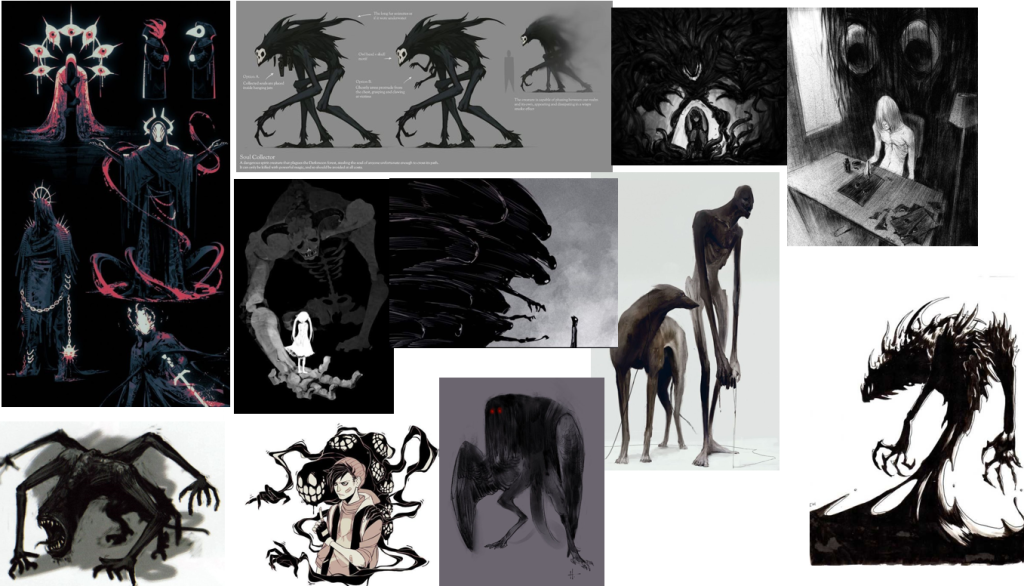
Most of the time I felt like I was looking at SCP creatures, specifically SCP-096 but I definitely think that the more grotesque and scary designs are not what I want to go for. I want the design to be unsettling at most, not downright terrifying – especially because depression is often referred to as a comfort for mentally ill people who have struggled with it for long periods of time, the character should be as welcoming as it is threatening. Demons also came to mind a lot, and similar designs made a fair bit of sense considering the common religious hysteria that comes in response to mental illnesses such as schizophrenia and manic depression.
With exception of Bargaining (an ogre), the other griefs have followed a pattern of being inspired by animals or having animalistic features (Anger – ram, Denial – serpent). I considered depression and its draining and exhaustive qualities, the way it weighs people down and eats away at their energy and desire to live life to the fully, or at all in some cases. Leeches were the first thing to come to mind for their parasitic nature – they invoke feelings of revulsion and abhorrence. Squishy and cold, emerging from the watery depths to feed on warm blood… It’s easy ro understandd why leeches inspire nightmares. Another thought was looking at crows because of their deep association with loss and mourning, and in many cultures they are depicted as wise or prophetic.
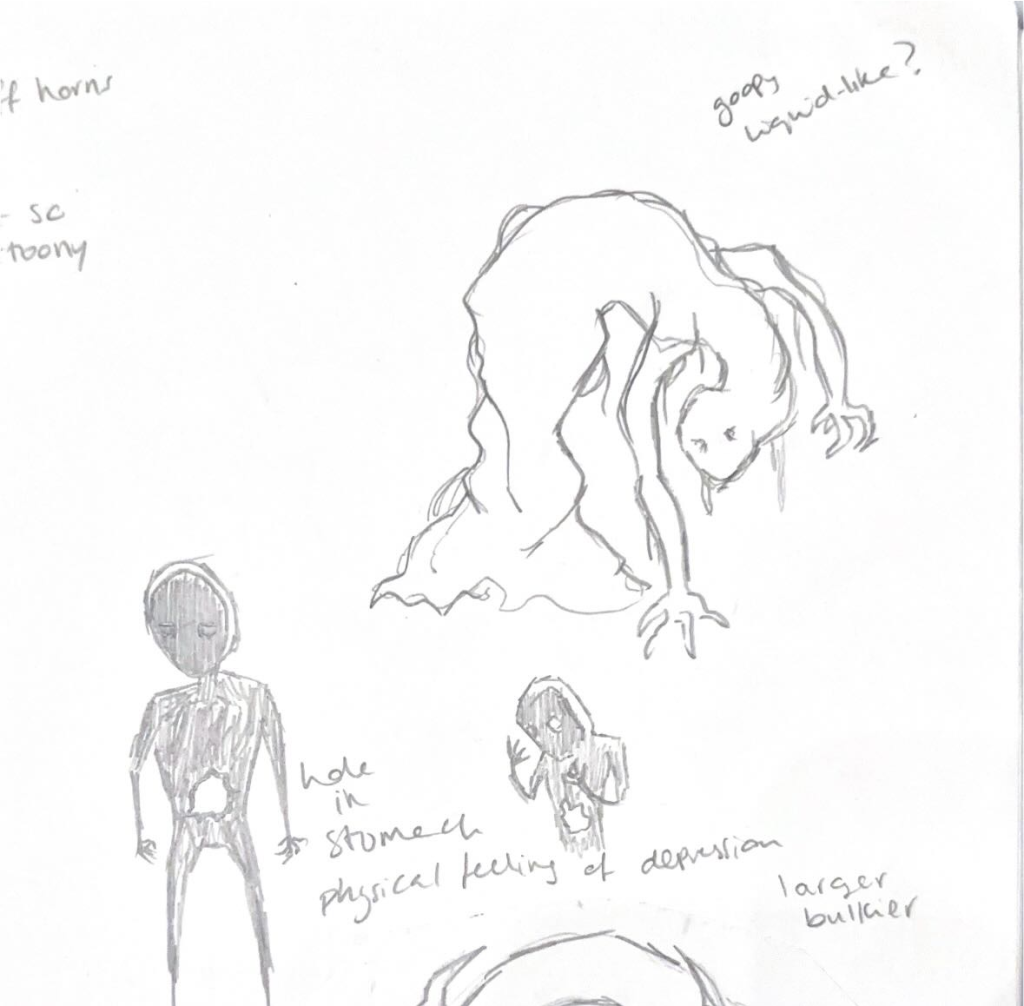
For Depressions first form, I still wanted deprived, isolated and hopeless. I hoped to use a lot of blues and greys and overall just darker colours, in a sketchier, messier style.
For the more manic form of depression I took a lot of inspiration from Marvel’s Venom, the symbiote was surprisingly really effective in portraying what I wanted, as funny as that sounds.
Concept Art

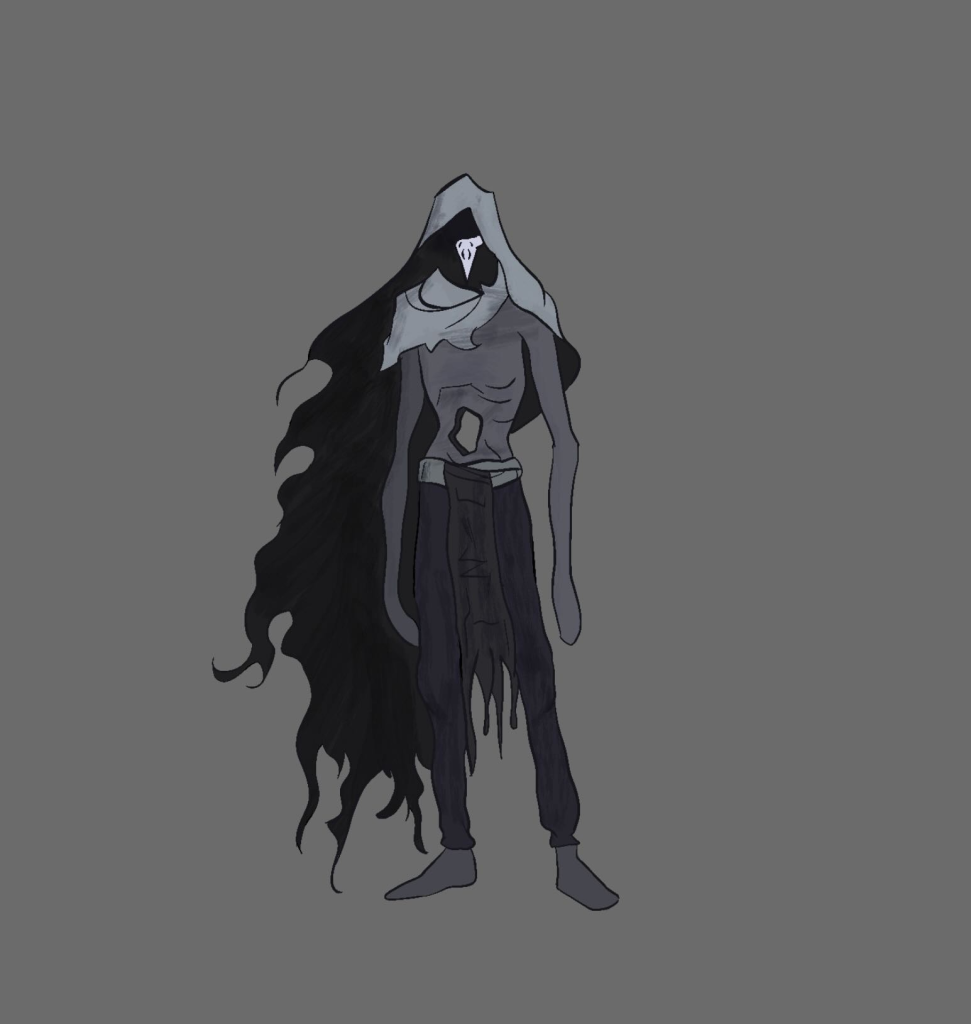
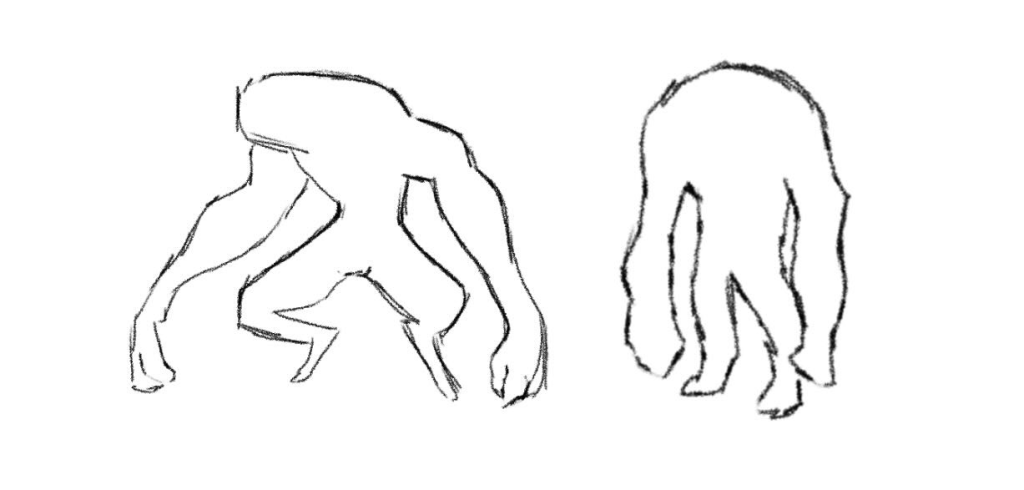

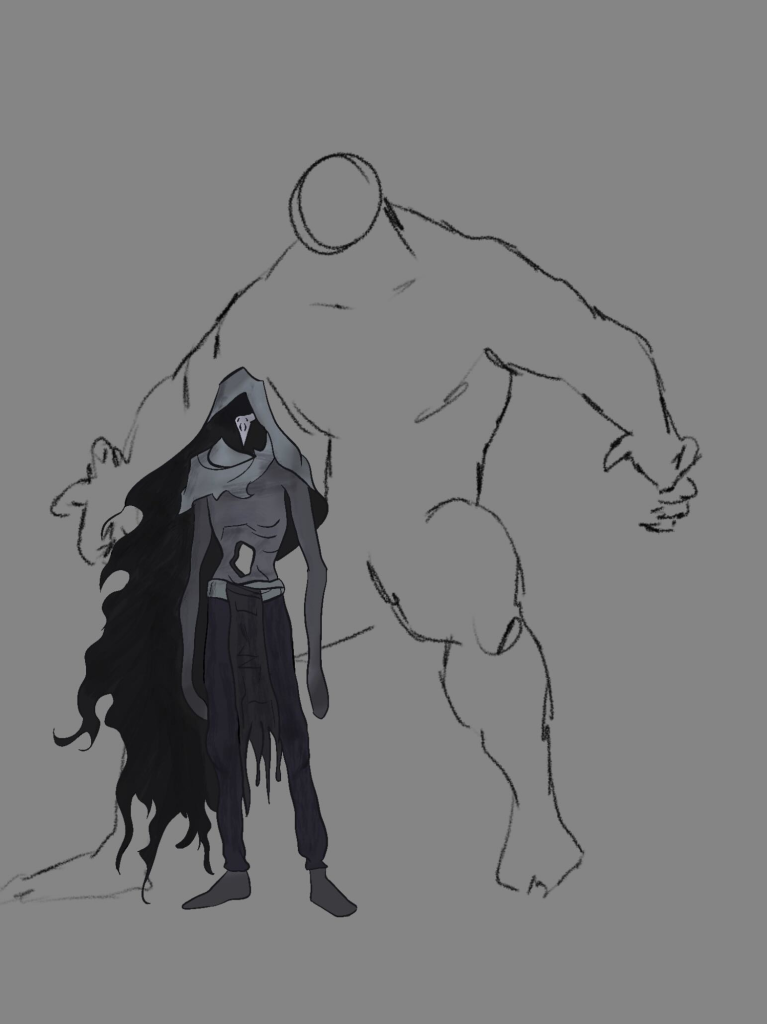
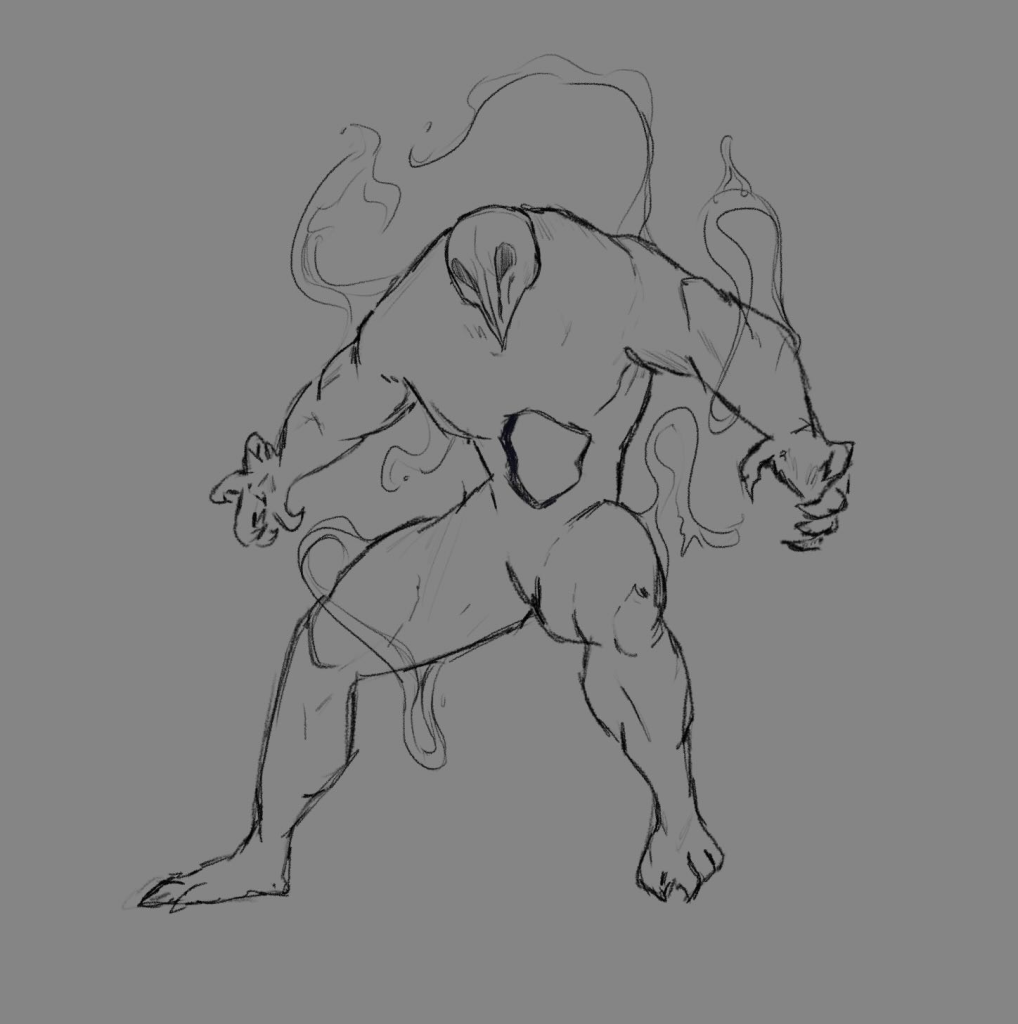
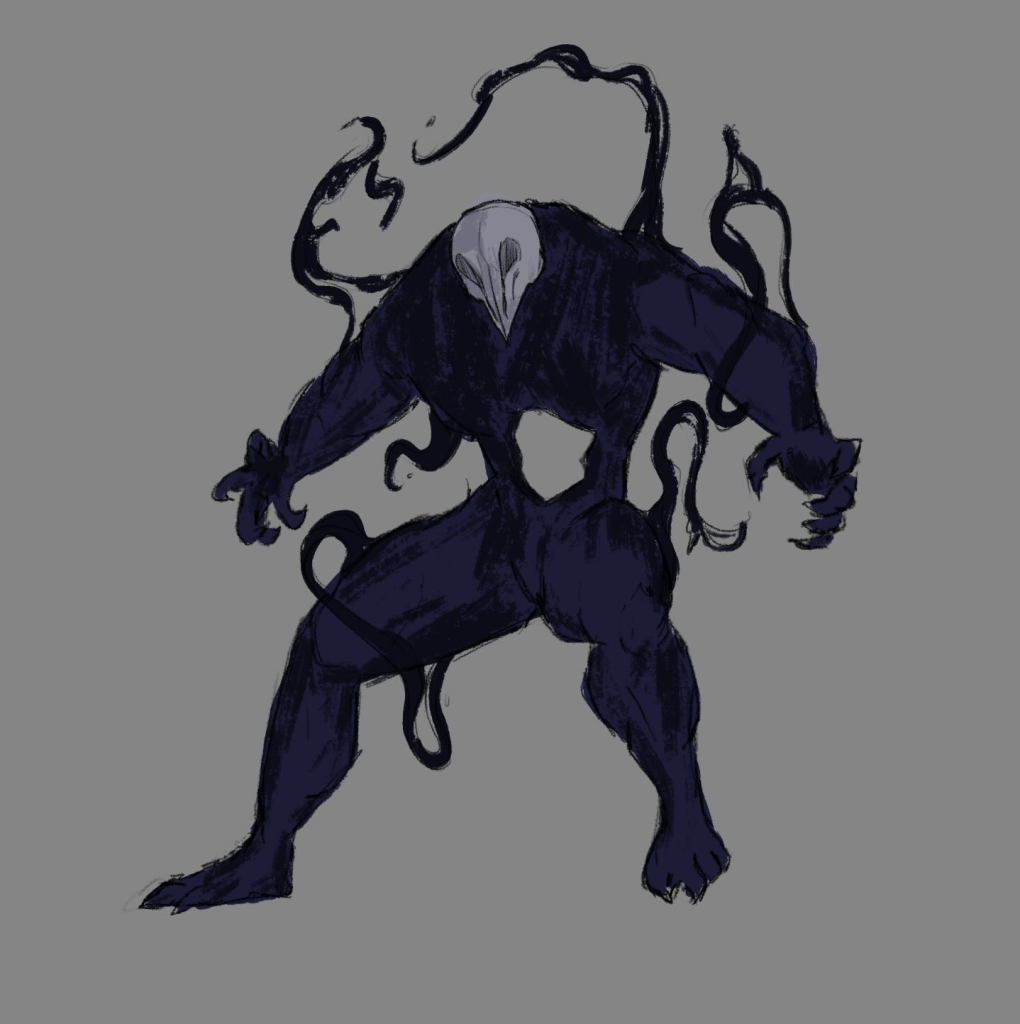
Final Concept Design
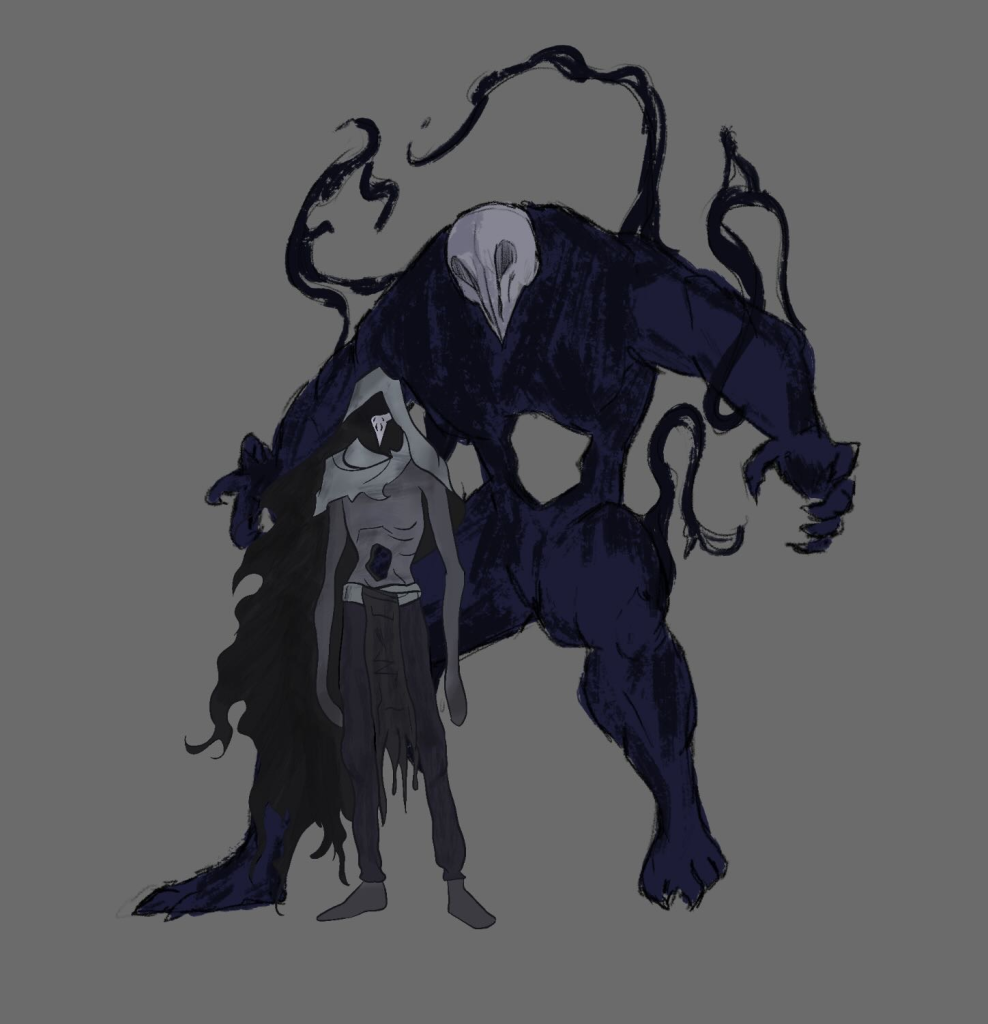
This Depression design is a big improvement from my initial one, while I still think I could’ve gone above and beyond with all the different possible ideas I had to create something truly unique, I really do like how it came out, especially the second, larger Depression – the sketchiness and the paint strokes stood out to me a lot and I’m very pleased with it.
I still wanted to keep all of my character designs the same style, that was something I struggled the most with when it came to the art section of this project. I don’t consider myself an artist whatsoever but this project has allowed me to properly experiment with digital art and it was a good experience despite the lack of consistency.
Leave a Reply